Gonometa titan
Gonometa titan ist eine afrikanische Lasiocampidae Art. Sie kommen in Zentralafrika vor, die Fotos sind von einem Stamm aus dem Obout village in Kamerun. Die Raupen dieser Art sind extrem langsam wachsend. Sie brauchen mindestens 5 Monate und werden bis zu 18 cm groß bis sie sich verpuppen. In dieser Zeit häuten sie sich insgesamt 7 Mal. Die Raupen ernähren sich sehr polyphag, Eiche, Kiefer und Rose werden gut angenommen. Die Zucht dauert zwar recht lange, ist aber nicht schwer. Auf einer Schwierigkeitsskala von 1 bis 10 liegt diese Art bei 4.
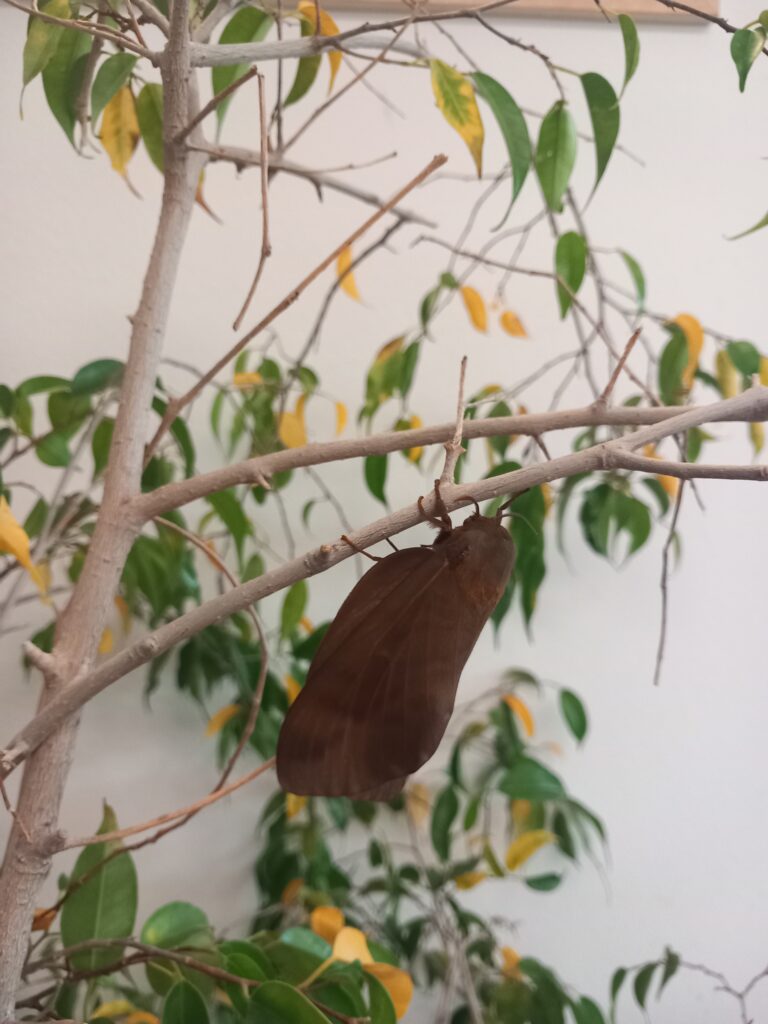
Fotos: https://schmetterlingszucht.net/gonometa-titan/
Aus den Eiern schlüpfen nach etwa zwei Wochen die schwarz-gelb gefärbten Raupen. Sie fressen an vielen Pflanzen. Eiche und Rose sind sehr zuverlässig, Kiefer kann etwas Probleme machen, sollte aber auch angenommen werden. Vermutlich würden auch noch viele andere Pflanzen auch funktionieren, hierfür fehlen aber noch Erfahrungswerte. Nach der ersten Häutung verlieren die Raupen ihre gestreifte Färbung und werden grau mit kleinen roten Büscheln am Rücken.
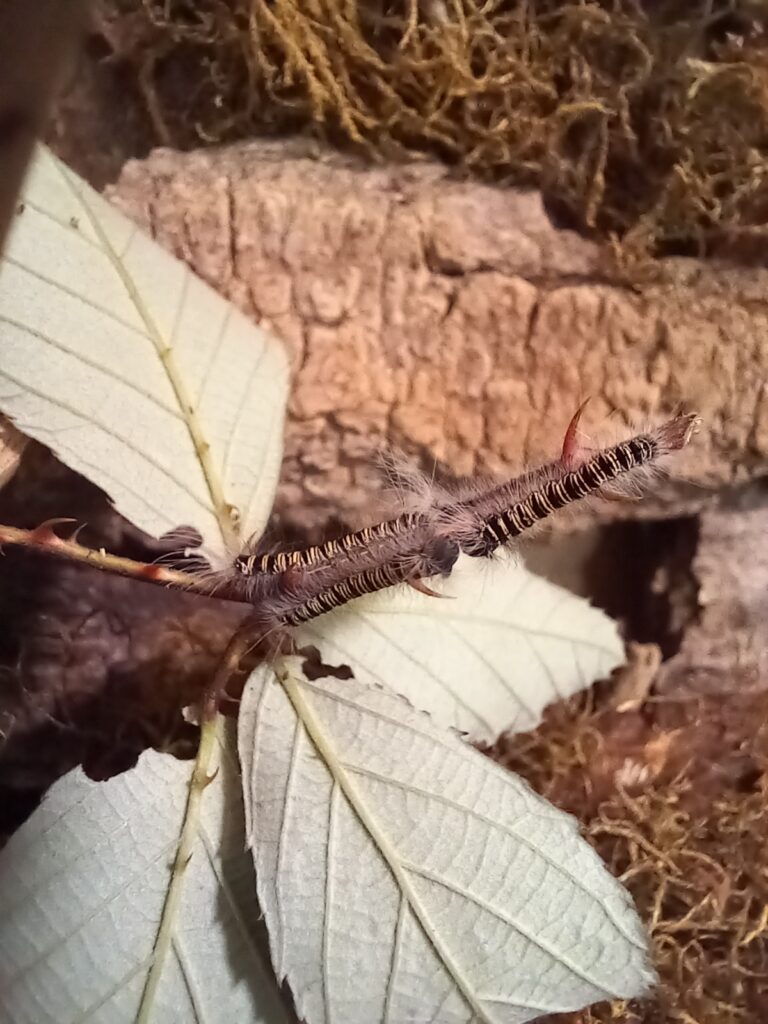
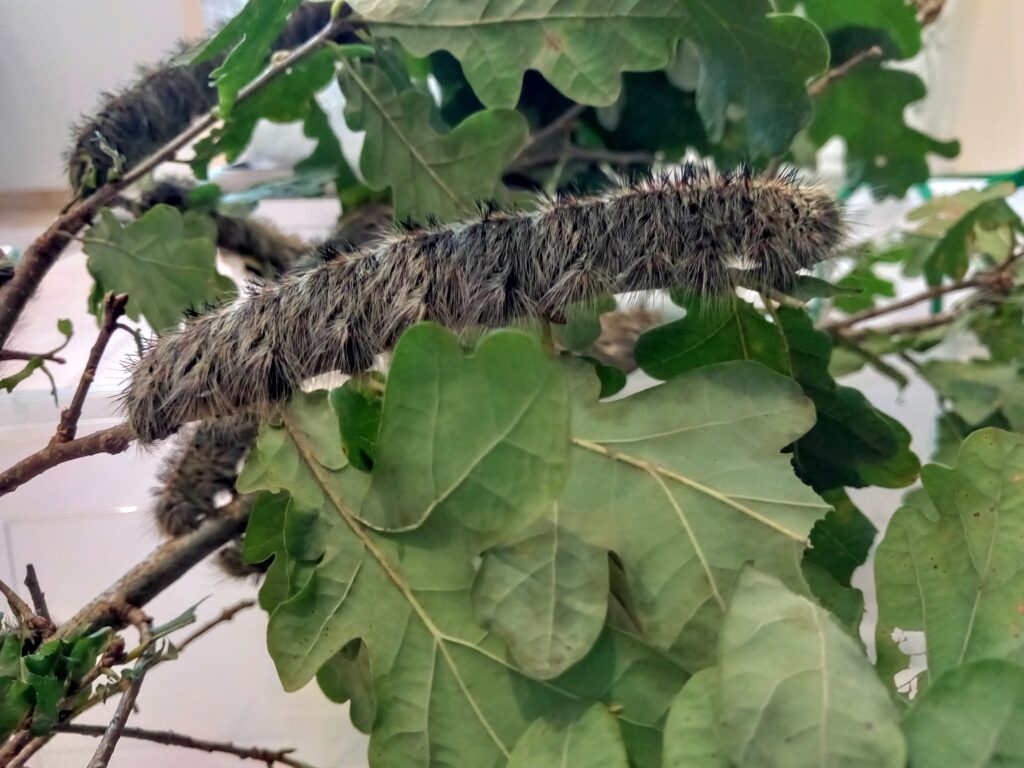
Ab L3 sollten die Raupen in Netzkäfige auf gewässertem Futter gehalten werden. Für die Raupen sollte viel Platz eingeplant werden, in einem 40 mal 40 mal 60 cm Käfig können etwa 6 bis maximal 8 Raupen großgezogen werden. Sie fressen für ihre Größe nicht besonders viel, trotzdem sollte man eine gute Futterquelle für eine lange Zeit haben. Die Raupen haben, wenn sie größer werden, Stacheln. Sie sind nicht besonders Spitz und groß, trotzdem ist Vorsicht geboten und man sollte die Raupen nicht berühren oder Handschuhe verwenden.
Nach Minimum 5 Monaten sind die Raupen bereit zur Verpuppung. Die größeren Raupen werden später die Weibchen, die kleineren Männchen. Deshalb kann es etwas schwer werden später ein Paar gleichzeitig zu bekommen. Die Raupen bauen sich einen Kokon an den Ästen der Futterpflanze. Sie geben von innen eine nicht wasserlösliche, gelbe Flüssigkeit in den Kokon ab, die sie vor Eindringlingen schützt. Es ist nicht nötig sie zur Verpuppung zu separieren, die fertig gebauten Kokons können mit einem Teil des Astes abgeknipst werden.

Die Kokons werden entweder luftig gelagert und regelmäßig besprüht, oder in einem Setup mit Kokosfasern/Moos ohne besonders viel sprühen gelagert werden. Zimmertemperatur passt sehr gut. Wenn die Puppen für einige Zeit trocken gelagert werden und dann die Luftfeuchtigkeit erhöht wird, kann der Schlupf einigermaßen synchronisiert werden.
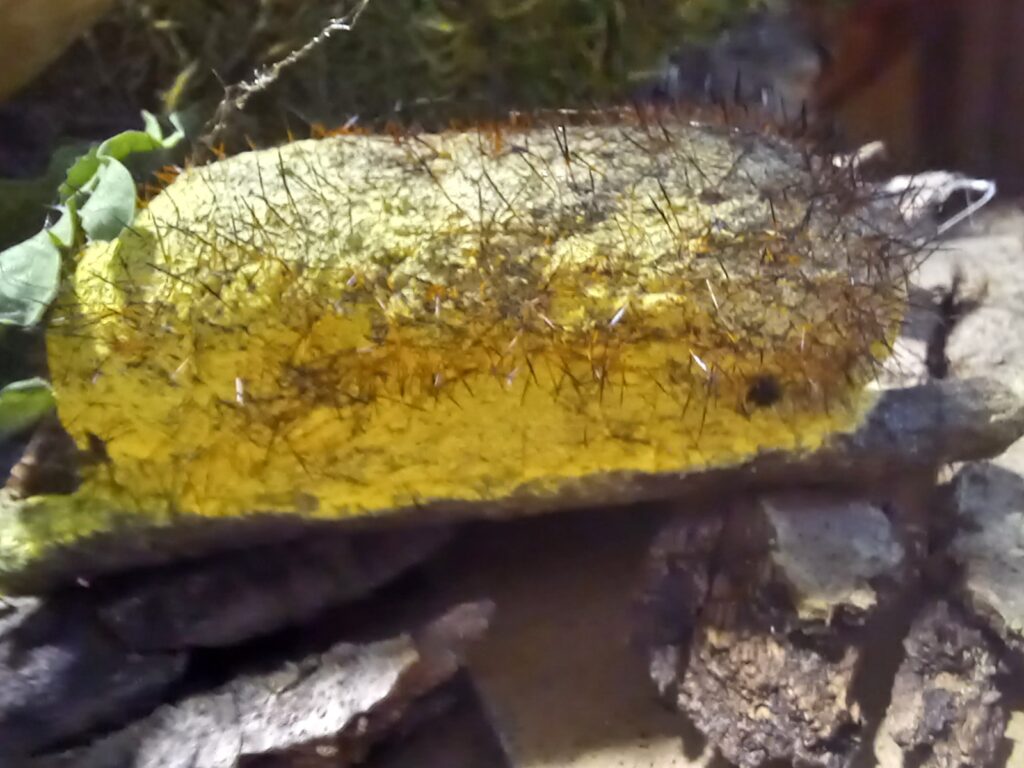
Nach 4 bis 8 Wochen schlüpfen die Falter. Die Flügelspannweite von Weibchen kann bis zu 15 cm sein, in der Zucht bleiben sie aber häufig kleiner. Männchen sind deutlich kleiner. Natürliche Paarungen sind sehr schwer zu erzielen, Handpaarungen sind aber nicht schwer.
Wenn die nächsten 6 bis 7 Monate genügend Futter vorhanden ist, ist Gonometa titan eine sehr schöne Art zum Züchten. Die Aufzucht der Raupen ist einfach, etwas anspruchsvoller ist die Synchronisierung des Schlupfes und die Paarung.
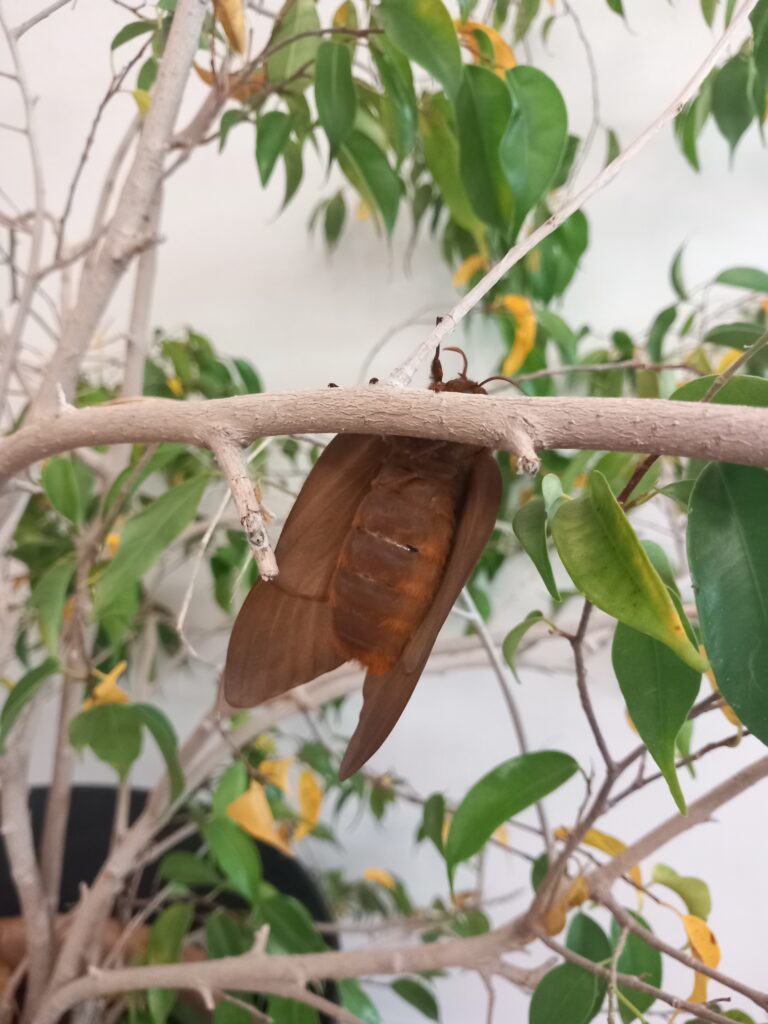
English version:
Gonometa titan is an african Lasiocampidae species. They are found in Central Africa, the photos are from a tribe in the „Obout village“ in Cameroon. The caterpillars of this species grow extremely slowly. They require a minimum of 5 months and can grow up to 18 cm before they pupate. During this time, they undergo a total of 7 molts. The caterpillars are highly polyphagous and readily feed on oak, pine, and rose. Breeding them takes some time but is not difficult. On a difficulty scale from 1 to 10, this species rates at 4.
pictures: https://schmetterlingszucht.net/gonometa-titan/
The black and yellow-colored caterpillars hatch from the eggs after about two weeks. They feed on many plants, with oak and rose being very reliable, while pine can pose some challenges but should also be accepted. Many other plants might work as well, but there is a lack of experience with them. After the first molt, the caterpillars lose their striped coloration and become gray with small red tufts on their back.
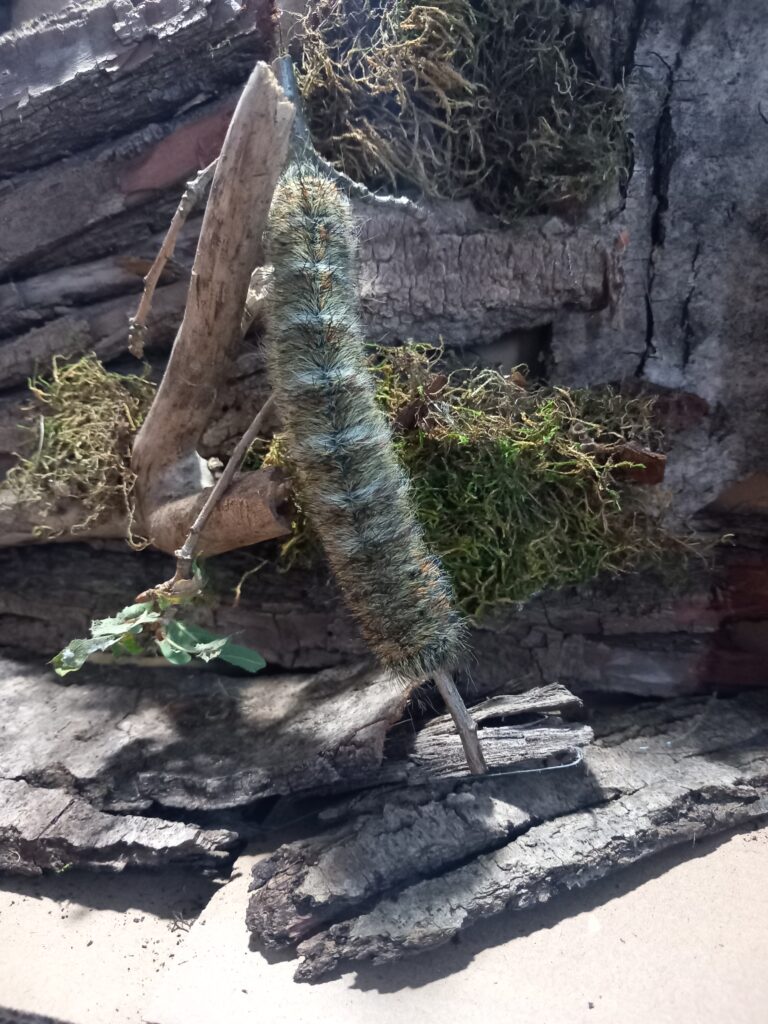
Starting from L3, the caterpillars should be kept in mesh cages on watered food. It’s essential to provide ample space for the caterpillars. In a 40 by 40 by 60 cm cage, you can raise approximately 6 to a maximum of 8 caterpillars. Despite their size, they don’t eat particularly much, but it’s crucial to have a good food source for an extended period. As the caterpillars grow, they develop spines. While these spines are not particularly sharp or large, caution is advised, and it’s best not to touch the caterpillars or use gloves.
After a minimum of 5 months, the caterpillars are ready to pupate. The larger caterpillars will later become females, while the smaller ones will become males. Therefore, it can be somewhat challenging to obtain a pair at the same time. The caterpillars construct a cocoon on the branches of the food plant. They release a non-water-soluble yellow liquid from the inside of the cocoon, which protects them from intruders. It’s not necessary to separate them for pupation; the completed cocoons can be cut along with a portion of the branch.

Caterpillar in L8 and a cocoon
The cocoons can either be stored in a well-ventilated area and regularly sprayed or in a setup with coconut fibers/moss without excessive spraying. Room temperature works well. If the pupae are kept dry for a while and then the humidity is increased, the emergence can be somewhat synchronized.
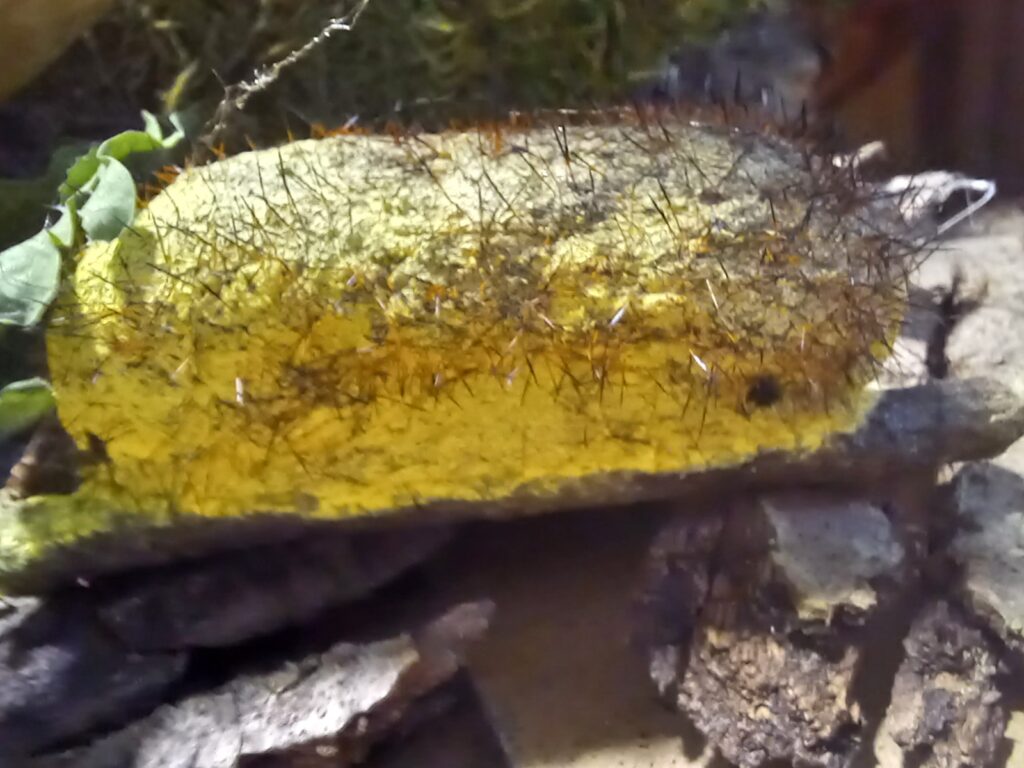
After 4 to 8 weeks, the moths emerge. The wingspan of females can reach up to 15 cm, but in captivity, they often remain smaller. Males are significantly smaller. Natural pairings are challenging to achieve, but hand pairings are not difficult.
If there is enough food available for the next 6 to 7 months, Gonometa titan is a beautiful species to breed. Raising the caterpillars is straightforward, but synchronization of emergence and mating can be a bit challenging.